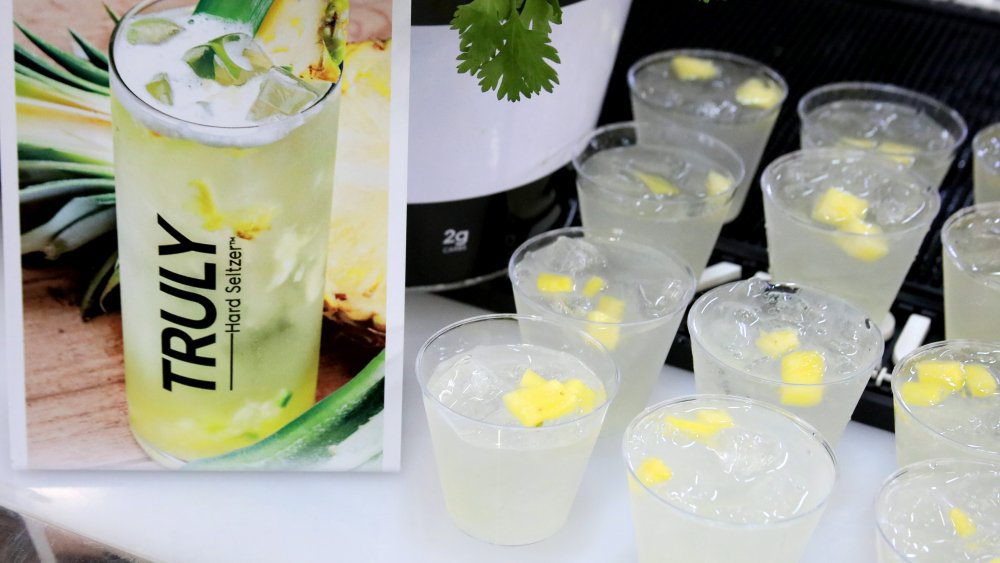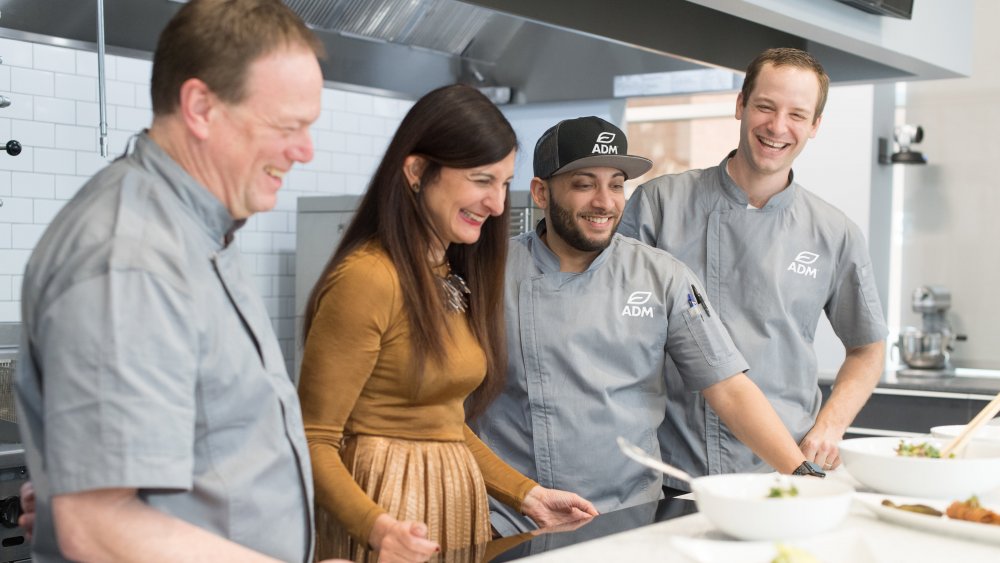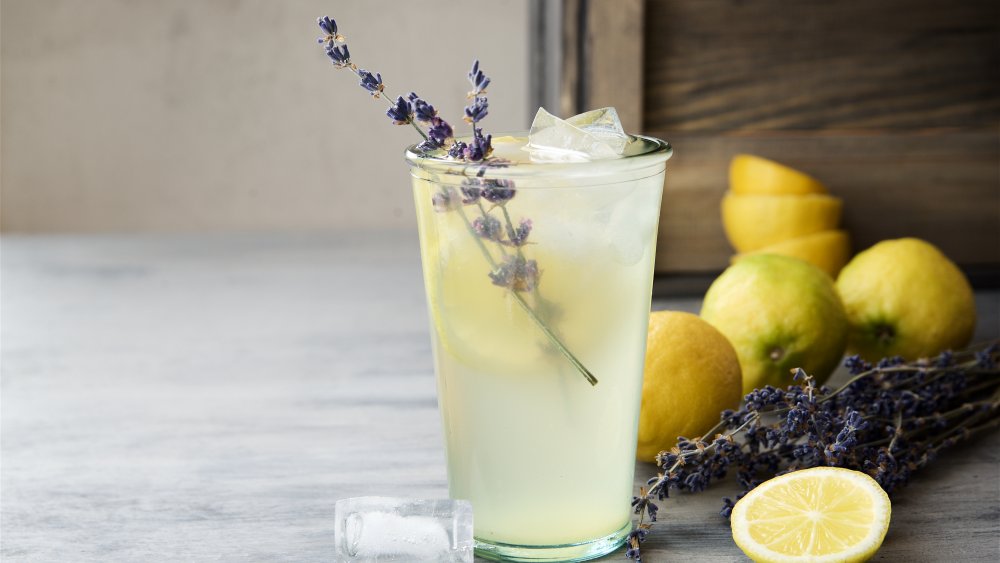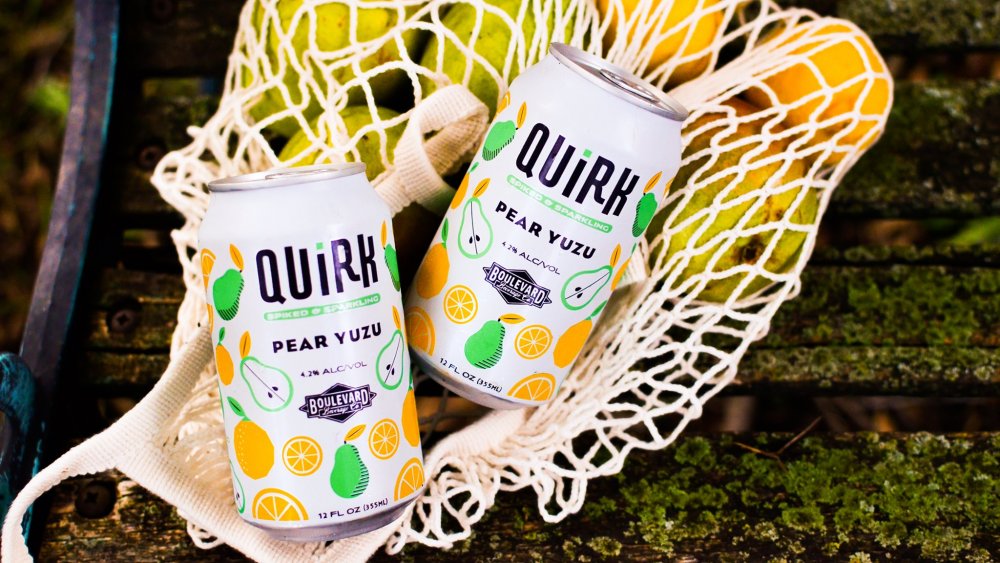The Surprising Way Your Favorite Hard Seltzer Gets Its Flavor, Per An Expert
When hard seltzer started appearing in stores a few years back, some were skeptical, as "malternatives" such as Zima had failed to really take off in the past and hard sodas such as Henry's weren't exactly threatening the existing beerocracy. Hard seltzer hung in there, though, til the Summer of White Claw (just last year, can you believe?) saw not only that beverage but other brands such as Truly, Bon & Viv, and Press explode in popularity to the point where they outsold many popular beers.
In part, this was due to the fact that hard seltzer was seen as a healthier alternative to beer with fewer calories and carbs but similar alcohol content. What may have really driven the surge in hard seltzer sales was the fact that it comes in such a wide variety of flavors. If there's anything we love here in the U.S. of A, it's our freedom of choice, and the more choices, the better. Although there are a bunch of different varieties of beer – light lagers, dark, heavy stouts, super-bitter IPAs – beer still pretty much tastes like beer. Seltzer, on the other hand, comes in fun flavors ranging from pineapple pomelo to lemon lavender. Just how do seltzer makers come up with these flavors? We spoke with Marie Wright, Chief Global Flavorist and President of Creation, Design & Development for Archer Daniels Midland (ADM), to get the inside scoop.
How hard seltzer flavors are developed
Wright says that the jumping-off point in product R&D will usually involve some form of customer input. ADM gathers opinions from hard seltzer drinkers via a social media tool called OutsideVoice™ that allows them to get some idea what flavors everyone's anxious to see and what's likely to go over well with the seltzer-drinking demographic.
Once seltzer makers decide on a particular flavor, they'll then try to create that flavor or combination of flavors by blending extracts, oils, absolutes (according to AromaWeb, these are "highly aromatic liquids extracted from plants [with] the use of chemical solvents that are later removed"), and natural molecules. Wright says ADM utilizes different experts – ones who specialize in citrus, say – to develop different flavor profiles. As she explains, "The approach a flavorist uses to develop a recipe of a flavor is very similar to that of a chef. We blend many ingredients to produce a perfectly balanced taste."
Coming up with new flavors can be challenging
When asked what seltzer drinkers tend to be looking for, Wright answered that they "generally want clean, authentic flavors that aren't too sugary. "The challenge, she says, comes with the fact that trying to hold back on the sweetness makes it difficult for flavorists to create natural-tasting fruit flavors that have the necessary strength to stand up to the taste of the alcohol in these beverages. Sugar, like salt, enhances other flavors as well as imparting its own taste, but it's not the easiest substance to work with. Wright says "it requires you to be clever because you also don't want a flavor that ends up tasting artificial."
At times flavorists have to resort to some unusual "tricks and techniques" in order to nail that just-right taste and aroma while retaining stability. Wright says that one of her go-to ingredients with citrus is lavender absolute since it can make the citrus seem juicier. She also says it's often necessary to use different fruit blends to add sweetness and mouthfeel. "At the end of the day," she concludes, "you want a bold fruit flavor and a full-bodied, authentic aroma [with] a prelude, a heart, a base, and resolve with a gentle finish [and] balance between each stage." With all of this kept in mind, she says, "even a simple flavor can be complex."
What seltzer flavors are we likely to see more of?
When we asked Wright about what flavors she thought were going to be popular in the near future, she said that citrus flavors have always been very successful, but that she foresaw "a trend towards more sophisticated citrus varieties such as calamansi [and] pomelo," and told us, "I particularly like yuzu, which is a kind of citrus fruit that is native to Japan. It's not widely commercially available but you're starting to see more seltzers and other [beverages] with yuzu flavors." She also noted that clementine flavors really seem to be taking off.
Citrus flavors aren't the only ones seeing an increase in popularity. Wright says, "We are seeing an uptick in tropical flavors for hard seltzers, as flavors like passionfruit and mango become more mainstream." She also spoke of "fall seasonal flavors like pumpkin spice and apple spice" as well as "spa flavors...such as cucumber mint or peach lavender" that she foresees being developed to promote relaxation and reduce anxiety. Wright's forecast for the future of hard seltzer sees more complex flavors on the horizon, but one thing's for certain, she says: "There's no doubt that hard seltzers are here to stay."



